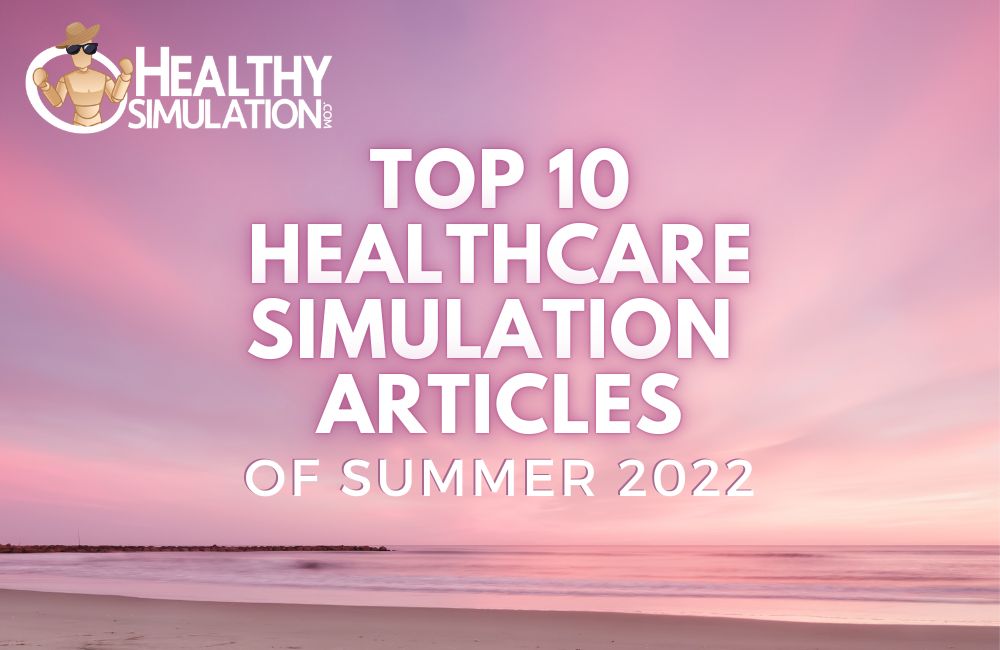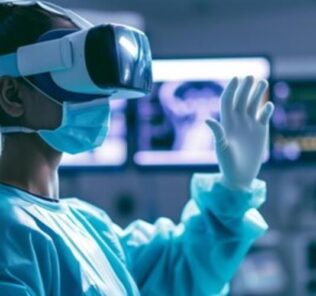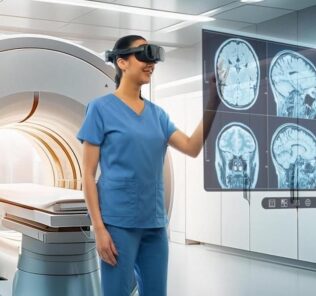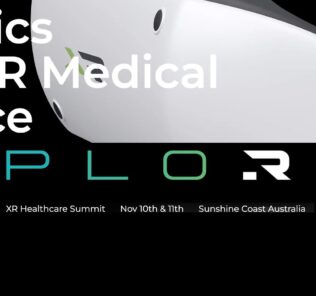Top 10 Healthcare Simulation Articles of Summer 2022
HealthySimulation.com is dedicated to bringing the latest healthcare simulation news, updates, and information to the clinical simulation community across the world. During the summer of 2022, the articles published included coverage of a range of medical simulation topics, from medical simulation center updates and considerations to ways clinical simulation is currently being utilized across medicine. HealthySimulation.com’s team of writers aims to provide healthcare simulation articles that are helpful to learners, professionals, and leaders within the industry. Below are the top ten healthcare simulation articles published in the summer of 2022.
Factoring for Time Warp in Healthcare Simulation Scenarios
By Kirk Atkinson
In general, the practice of simulation is primarily a mimicry of real life. This is especially true in healthcare simulation, where almost every medical simulation activity is created based on a real event. Whether the clinical simulation involves running a mock code in the emergency room or administering a medication to elicit a reaction for a disorder, healthcare simulation attempts to mimic or recreate these situations in the most realistic ways possible – in order to maximize the learning potential of having a real-world impact on the learners. That being said, some patient cases can take several hours, or several weeks to unfold – and as there are serious restrictions on the availability of performing simulation (due to scheduling challenges, consumable budgets, staffing availability, equipment operability, etc) – educators cannot always provide the entire duration of simulation experiences in a 1 to 1 ratio from reality to the simulated environment. As such, this HealthySimulation.com article by Kirk Atkinson, a Simulation Educator/Simulation Operations Specialist at UT Southwestern, discusses how healthcare simulation timeframes differ from the realistic time of medical reactions and responses, known as a simulation time warp, and why this should be considered when establishing healthcare simulation scenarios.
Sponsored Content:
HBO’s “Rehearsal” is Must-Watch TV for Healthcare Simulation Community
By Lance Baily
HBO’s new docu-comedy “Rehearsal” is the perfect summer watch for the global healthcare simulation community – flawlessly intertwining multiple captured realities into a seamless experience for us, the audience. HealthySimulation.com Founder/CEO Lance Baily, who earned his bachelor’s degree at UCSC in documentary film production, shares, “The editing in ‘Rehearsal’ weaves alternating timelines together so smoothly that it’s like watching multiple gears of a clock, working independently and yet always together.” Not only is the show amazing to watch, but the production does a fantastic job demonstrating the potential of hyper-realistic simulation to the world at large. “Rehearsal” shows that simulation works and is a must-watch!
2HeadsR >1: A Healthcare Simulation Strategy for Role Assignment
By Jeanne Carey, RN, CHSE-A
Two heads are better than one, or so the saying goes. The clinical simulation team at Baylor University Louise Herrington School of Nursing created an innovative strategy for role assignment in healthcare simulation built on this adage and learners are not the only ones reaping the benefits. Faculty are gaining new insight into their learners’ critical thinking skills and peers who are serving as observers during the medical simulation scenario are more engaged. Ultimately, the Two-Heads-Are-Better-Than-One (2HeadsR>1) strategy encourages collaboration and prioritization, while highlighting critical thinking and clinical reasoning. This HealthySimulation.com article explains what this strategy entails, and how to implement this type of thinking across healthcare simulation education settings.
Sponsored Content:
Healthcare Simulation Mentorship and Facilitator, Faculty Development
By Tiffani Chidume, DNP, RN, CCRN-K, CHSE, CHSOS
While healthcare simulation education and training can greatly benefit learners within the clinical simulation industry, those with great knowledge of the field and the methods and operations involved can also be of great value. This is why healthcare simulation mentorship among facilitators and faculty is a resource that should be encouraged. Through clinical simulation mentorship, both facilitators and faculty members can become more confident and aware, in addition to being faced with new experiences and perspectives. This article, written by Tiffani Chidume, DNP, CCRN-K, CHSE, CHSOS, associate clinical professor and simulation center coordinator at the Auburn University College of Nursing, shares how and why such mentorship is crucial across medical simulation.
How to Determine the Most Effective Healthcare Simulation Equipment for a Scenario
By Michelle Sherlin
Human patient simulation has come a long way since the days of the first resuscitation manikin in 1960. In fact, healthcare simulation has really evolved into a high-tech science at the beginning of the 21st century. Today, the medical simulation industry offers a multi-billion dollar plethora of high, mid, and low fidelity options from task trainers with and without feedback, to virtual reality computer modules, and wearable task trainers, to full body responsive, high-fidelity patient simulators. Yet, the challenge becomes how to determine which equipment will “do the job” the most effectively and facilitate the achievement of increased learning outcomes. This HealthySimulation.com article discusses the steps involved in this process and ideas to consider along the way.
Using Clinical Simulation to Improve the Medication Administration Process
By Jill Sanko
Medication administration errors contribute to thousands of patient deaths each year. Errors occur frequently related to missed actions in the medication use process with nearly 50% of all errors in doses and prescriptions attributed to missing a step. Recently the nursing community followed with dread the case of RaDonda Vaught whose workaround within her hospital’s incommodious med admin system led to a patient’s death and her criminal conviction. The habit of overriding automated dispensing cabinets (ADC) has become so common, so concerning, and perceived as such a serious threat to patient safety that the Joint Commission has advocated for the use of an override assessment process for hospitals. This article suggests ways that healthcare simulation can be used to improve knowledge of how healthcare simulation and technology can help to prevent medication administration errors.
Monkeypox for Healthcare Simulation: Moulage & Resources
By Lance Baily
Of the many lessons learned from the COVID-19 pandemic, one that was clear remains that healthcare simulation can be used to help medical professionals train for these types of large-impact infectious diseases. From simulating how such a disease could spread from location to location to training healthcare staff on how to respond to infected patients, the practice of medical simulation has proved extremely beneficial. As world health leaders now shift their attention to the increasing number of Monkeypox infections globally, they must remember the usefulness of healthcare simulation – from moulage to task trainers and even virtual reality simulation. This HealthySimulation.com article shares a number of ways medical professionals can once again call on clinical simulation to prepare for growing Monkeypox outbreaks.
Actionable Steps to Increase Learner Participation in Healthcare Simulation
By Remy Roe
As technology in the field of healthcare simulation progresses, so do the professionals that develop, build, operate, and troubleshoot this clinical simulation technology. Moreover, information sharing facilitated by groups like the Gathering of Healthcare Simulation Technology Specialists (SimGHOSTS), Laerdal’s Simulation User Network (SUN), and the plethora of resources provided by the Society for Simulation in Healthcare (SSH), have ensured that anyone in the field of healthcare simulation can effectively connect, groupthink, and resolve even the most obscure of predicaments. This HealthySimulation.com article discusses how subsequent participation in healthcare simulation can be achieved through several actionable steps.
Considerations for Integrating an LMS in Healthcare Simulation Centers
By Courtney Washington
A healthcare simulation center serves as much more than a brick-and-mortar space for clinicians to participate and practice soft- and hard-core skills in a replicated medical environment. Medical Simulation centers can also act as an innovative hub for the development of collaborative interactions between departments for systemic improvements across an entire institution. However, advancing a simulation program to this higher level of functionality will almost certainly require the use of a Learning Management System (LMS) to help automate and operationalize support of all daily aspects of a larger healthcare simulation center. As such, this HealthySimulation.com article discusses considerations that should be made when integrating an LMS into a clinical simulation center.
Augmented Reality vs Virtual Reality in Healthcare Simulation
By Kirk Atkinson
Have you ever wondered about the differences between Augmented Reality vs Virtual Reality? There is no doubt that the very nature of medicine has been forever changed by the COVID-19 pandemic and the healthcare industry’s response. The trickle-down effect has also impacted healthcare simulation and the way clinical simulation participants must now approach interactive learning. In this new approach, quite a few new modalities have risen to the top as the most innovative and eye-catching which all fit under the category of “XR” or Mixed Reality training. Virtual Reality (VR) and Augmented reality (AR) companies have developed at an increasing rate to help deliver quality healthcare simulation training while maintaining attention to safety in regard to COVID-19 protocols. This HealthySimulation.com article details some of the new simulation technologies available and helps identify which may be more ideal for certain facilities, institutions, learners, and educators.
More About HealthySimulation.com
HealthySimulation.com is the world’s premier Healthcare Simulation resource website, providing the latest news, CE/CME webinars and courses, conference coverage, research highlights, helpful guides, job listings, product demos, vendor connection services, community sharing, and more!
Started in 2010 by Lance Baily, the resource has provided well over 2,000,000 page views of medical simulation-specific content through thousands of daily articles to hundreds of thousands of healthcare professionals from around the globe. The HealthySimulation.com writing team has shared their passion for simulation in healthcare by writing over 4,000 articles so far!
HealthySimulation.com loves supporting healthcare professionals utilizing healthcare simulation to improve educational, training, and patient safety outcomes — and at no cost to readers! As an industry resource, the platform simply asks that readers consider sharing HealthySimulation.com links across their own social media accounts to generate a greater awareness regarding the field of clinical simulation. Questions? Email support@healthysimulation.com.
Subscribe for More of the Best Medical Simulation Updates!
Sponsored Content:



















